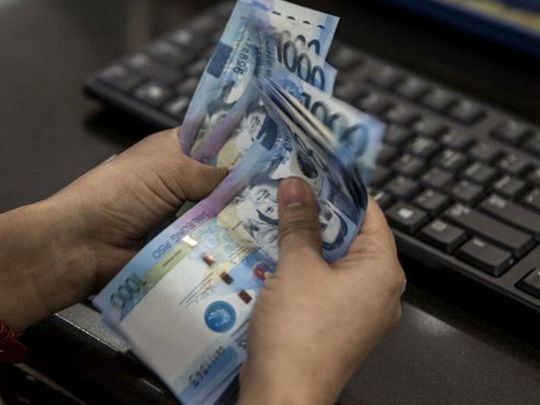
Manila. The Philippine peso declined further on Wednesday, around its 17-year low at 54.40 against the dollar. The Asian currency went down to Php54.50 vs $1 at 04:17 UTC — already its weakest since October 2018.
So your $100 fetches Php5,450.76 today, compared to Php4,863.0 on June 22, 2021. For reference, the Bangko Sentral ng Pilipinas (BSP) was selling dollars for $54.50 Wednesday, lower than the average of Php51.53/$1 in the first quarter of 2022.
Analysts cite two reasons for the peso’s continued decline:
● One is due to the increased attractiveness of the dollar following the US Federal Reserve’s record-setting 75-basis-point interest rate hike last week. The US Fed is seen tightening faster while the BSP appears to be taking smaller incremental steps to counter local inflation.
● The other is due to the lack — so far — of corresponding move from the BSP, which already raised the key policy interest rate by 25 basis points to 2.25 per cent in May.
Most market analysts expect the BSP's Monetary Board to act accordingly, but they're divided as to the level of policy rate hike: while some expect a hike of 25 basis points, others see double, or 50 basis points (0.5 per cent).
Policy-setting meeting
The BSP sets overnight rates, also known as "key policy rate". It is the interest rate charged to banks by the central bank in order to maintain price stability.
BSP Overnight Rates include Overnight Reverse Repurchase (RRP) rate, Overnight Deposit Facity Rate (ODF), and Overnight Lending Facility (OLF) rate.
When the BSP moves the key policy rate (up or down), it moves in lockstep with the benchmark 91-day T-bill rate, which then sets the direction for other rates, including bank lending rates.
While the central bank does not regulate bank or retail lending rates per se, it influences lending rates through its policy rate decisions.
Decision time
A rate-setting policy decision meeting by the BSP's Monetary Board is expected on Thursday (June 23). Earlier, Benjamin Diokno, the BSP Governor, reiterated that the monetary authority did not see the need to raise policy rates in direct response with the US Fed.
He has said the rate hike expected was likely at 25 bps.
Divergent policies
In 2018, divergent policy directions between the BSP and the rest of the world caused the peso to weaken by more than 9 percent. It cost $7 billion from the Philippines’ gross international reserves (GIR) for the BSP to defend the peso. The peso traded at a low of 54.40:$1 on Wednesday, it similarly did so at 54:33:$1 four years ago.
The Philippines has posted an increasing rate of inflation so far this year, primarily on account of higher oil prices — to hit 5.4 per cent in May — compared to 6.9 percent four years ago.








